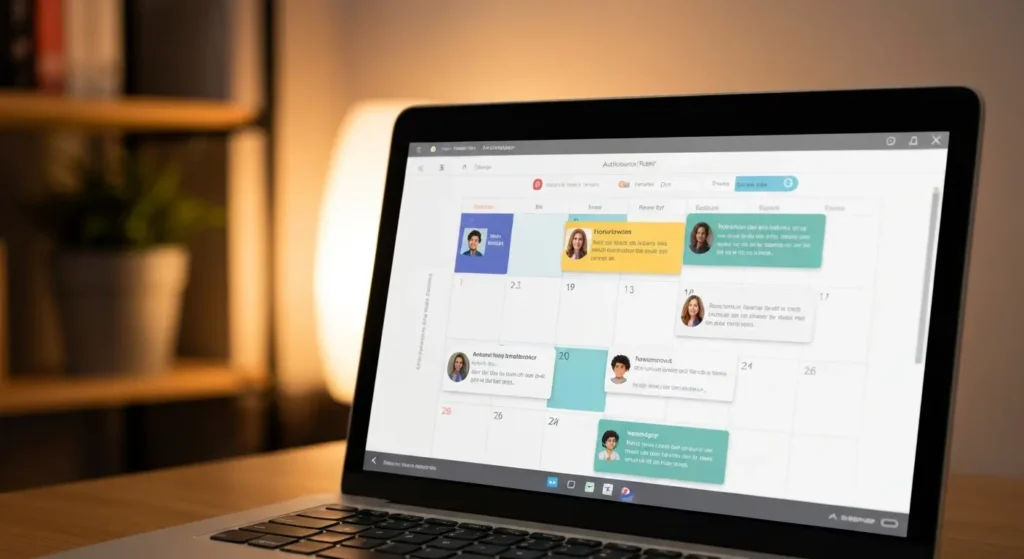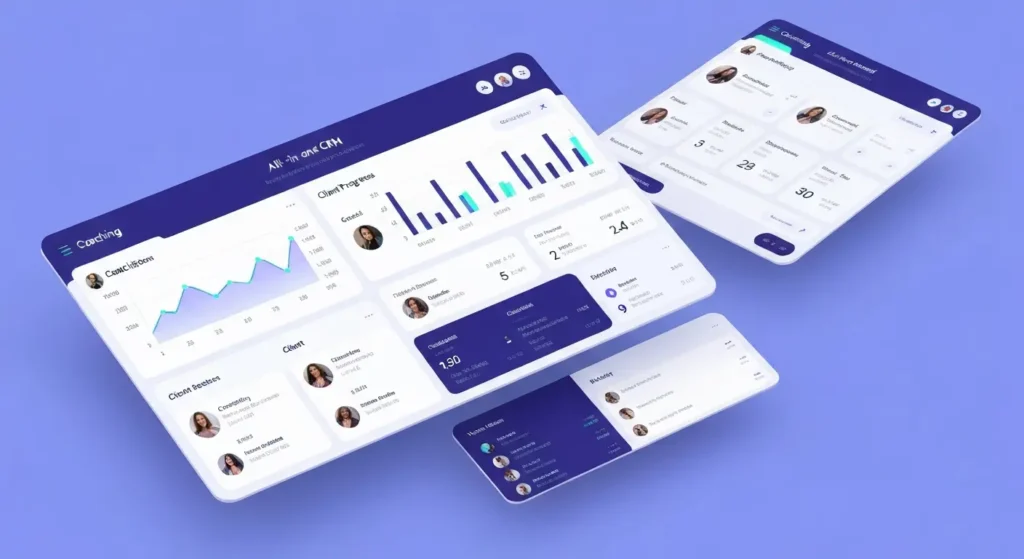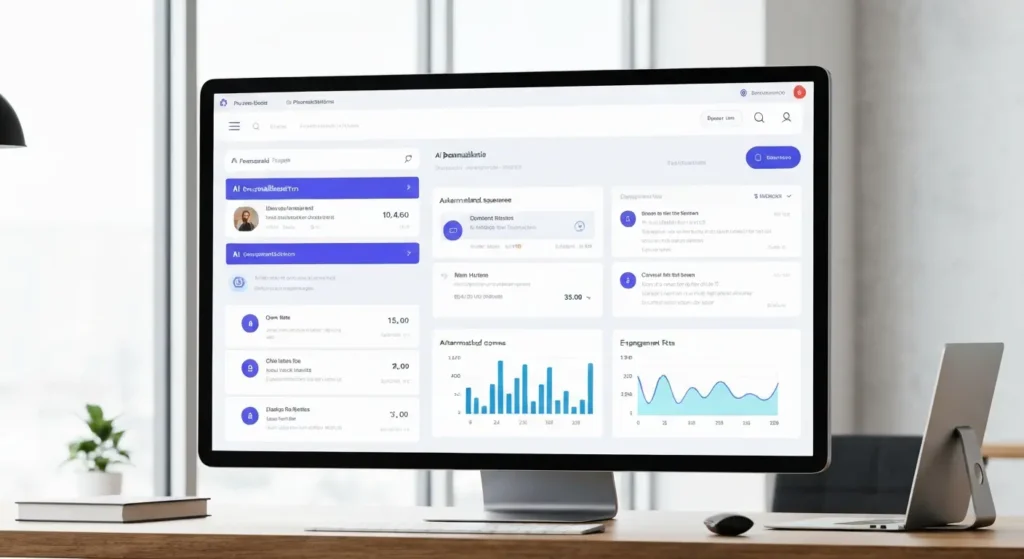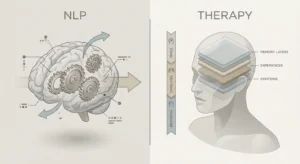You’re working 60-hour weeks. Your inbox is overflowing. Client scheduling feels like a full-time job on its own. You’re spending more time managing your business than actually coaching the work you’re passionate about, the work that transforms lives.
Key Takeaway:
- Automation is no longer optional for coaches and solopreneurs — it reclaims 10–20 hours per week, prevents burnout, boosts job satisfaction (88% report higher satisfaction), and lets you focus on high-impact coaching instead of admin drudgery.[1]
- Apply the 80/20 rule: automate anything you do 3+ times with the same steps — start with client scheduling (Calendly), payments/invoicing (Stripe), and marketing sequences (ActiveCampaign or Keap) to instantly free 5–15 hours weekly.[1]
- Top recommended tools: Simply.Coach or Flowlu (all-in-one for coaches), Calendly (scheduling), ActiveCampaign/Keap (authentic marketing automation), QuickBooks/FreshBooks (accounting), and Zapier/Make.com (to connect everything).[2]
- Smart implementation: Pick ONE biggest pain point → choose one tool → set it up in 2–4 hours using free tiers/templates → test for 30 days → only then add the next. Avoid the #1 mistake: over-automating too fast and getting overwhelmed.[2]
Bottom Line: Automate the transactional (scheduling, payments, follow-ups) so you can stay fully human for the transformational — start with one tool this week and reclaim your time, energy, and freedom.
- Source: Unleash Your Power – Best Business Automation Tools For Coaches And Solopreneurs
- Source: Tool sections & Frequently Asked Questions
If this sounds familiar, you’re not alone. Most new coaches and entrepreneurs hit this wall within their first year of building their coaching practice. The irony? You started your business to create freedom, but now you’re trapped in an endless cycle of administrative tasks.
Here’s what this means for you: automation isn’t a luxury anymore, it’s your lifeline to sustainable growth. The best business automation tools don’t just save time. They give you back your energy, your creativity, and your capacity to do the work that actually matters. Let’s explore exactly which tools will help you scale without losing yourself in the process.
Why Automation Isn’t Optional for Coaches and New Entrepreneurs Anymore
The numbers tell a compelling story. Recent automation research reveals that 88% of employees using automation report higher job satisfaction, and 74% say it helps them work faster. But here’s the statistic that matters most for coaches: you’re likely spending 30% of your time on administrative tasks instead of coaching.
That’s not just inefficient, it’s unsustainable. A coaching automation study found that solopreneurs can reclaim 10 or more hours per week through strategic automation. For payment processing alone, businesses free up over 500 hours annually. Imagine what you could do with that time.
The shift happening right now isn’t about working harder. It’s about building systems that work for you. Too many talented coaches burn out before their businesses ever gain traction, not because they lack skill, but because they’re drowning in operational tasks. These are the common growth barriers that automation directly addresses.
Here’s the mindset piece that matters: automation isn’t about becoming less human. It’s about protecting your humanity. When you automate the repetitive tasks that drain your energy, you preserve your capacity for genuine connection, creativity, and transformation, the things that make you exceptional at what you do.
Your clients don’t need you responding to emails at midnight. They need you to show up fully present when it matters. That’s what the right tools make possible.
What Should You Automate First? The 80/20 Rule for Solopreneurs
Not all tasks deserve automation. Start with the time-drains that don’t require your unique expertise, the things that keep you busy but don’t move your business forward. Intelligent automation platforms have made it easier than ever to identify and eliminate these bottlenecks.
Here’s your strategic framework: automate anything that happens more than three times with the same basic process. That’s your signal that a system should handle it, not you.
Client Communication and Scheduling

This is your highest-leverage automation opportunity. Every back-and-forth email about scheduling, every reminder you send manually, every intake form you review by hand, these steal hours from your week. When you’re scaling your coaching business, client communication systems become your foundation.
Automated scheduling eliminates the “what time works for you?” dance entirely. Clients book directly into your available slots, confirmations are sent automatically, and reminders go out without you lifting a finger. This single change can reclaim 5-8 hours weekly.
Payment Processing and Invoicing
Chasing payments is soul-crushing work. It damages your confidence, strains client relationships, and wastes time you could spend coaching. Payment automation removes you from this equation entirely. Clients pay upfront, invoices generate automatically, and late payment reminders are sent on schedule without awkward conversations.
The psychological benefit here is massive. When money flows smoothly, you focus on transformation instead of transactions.
Content Creation and Social Media
Your expertise deserves to reach people. But posting consistently across platforms while running a business? That’s where most coaches give up. Content automation tools let you batch-create your best thinking once, then distribute it strategically over time. You maintain visibility without constant content creation stress.
This isn’t about becoming robotic. It’s about amplifying your authentic voice efficiently. Schedule your insights during your peak creative hours, then let the systems handle distribution while you focus on client work.
Best Business Automation Tools for Client Management
The right client management system is your business operating system. Everything else connects to it. For coaches and solopreneurs, you want something that handles scheduling, client notes, progress tracking, and communications without requiring a computer science degree to set up.

All-in-One Platforms
Comprehensive business management platforms like Simply. Coach and Flowlu are purpose-built for service professionals. They combine CRM functionality, project management, and automation in one place. Flowlu recently launched a Solo pricing plan specifically designed for entrepreneurs, giving you enterprise features at solopreneur prices.
Simply. Coach goes deeper for coaching-specific workflows. Client portals, session notes, goal tracking, and payment processing all live in one ecosystem. You’re not juggling five different tools trying to piece together a functional system.
The key here is integration. When your scheduling tool talks to your CRM, which connects to your payment processor, which updates your client records automatically, that’s when automation compounds. Each tool amplifies the others.
Scheduling Tools
Calendly remains the gold standard for automated scheduling, but the magic happens in how you integrate it. Connect it to your email marketing, your CRM, and your client onboarding sequences. A new client books a discovery call, and suddenly they’re receiving your welcome sequence, getting added to your CRM with appropriate tags, and being directed to complete intake forms, all without your involvement.
Process management solutions like Wrike and Pipefy take this further for more complex coaching programs. They automate entire client journeys from inquiry to completion, ensuring nothing falls through the cracks.
CRM Solutions for Coaches
Your CRM is your business memory. It remembers what you’d forget: client preferences, past conversations, upcoming renewals, and follow-up timing. For coaches, the CRM shouldn’t feel like a database. It should feel like having a phenomenally organized assistant who never sleeps.
Look for systems that capture notes automatically, set follow-up reminders based on client stage, and surface the right information at the right time. When a client books a session, you should see their history, goals, and recent progress instantly. That’s how you show up prepared and present.
How Do You Automate Marketing Without Losing Your Authentic Voice?
This is the fear I hear most often: “Won’t automation make me sound generic?” The answer is no but only if you approach it strategically.
Advanced marketing automation platforms like ActiveCampaign use AI to personalize at scale. One entrepreneur reported generating over $76,000 in revenue from just two automated email campaigns. But here’s what made it work: the automation was built on genuine insights about what their audience needed. The technology amplified authenticity; it didn’t replace it.

Think of email automation as recorded wisdom, not robotic messages. You’re not sending less of yourself, you’re sending your best thinking at the exact moment someone needs to hear it. That’s not impersonal. That’s incredibly generous.
Small business CRM solutions like Keap take this further with drag-and-drop automation builders. You map out customer journeys visually, creating sequences that respond to behavior, not just time intervals. If someone downloads your lead magnet but doesn’t book a call, they get different messages than someone who booked but didn’t show. This responsiveness feels human because it mirrors how you’d actually communicate.
The secret to maintaining your voice through automation is recording yourself first. Write emails in your natural speaking style. Record video messages and repurpose the content. When you start with authenticity and then systematize it, the automation carries your presence forward.
Zapier and Make connect these systems together, creating automation workflows that would feel magical if they weren’t so practical. When someone joins your email list, tags them in your CRM, adds them to a welcome sequence, and notifies your team, all without your manual involvement. That’s not losing your voice. That’s extending your reach.
Best Business Automation Tools for Financial Operations
Money stress kills more businesses than competition ever does. When you’re manually tracking expenses, creating invoices, and wondering if you’ll get paid, you’re operating in survival mode. Financial automation shifts you into clarity and control.
Accounting Solutions
QuickBooks and FreshBooks dominate the small business accounting space for good reason. They automate expense categorization, generate financial reports instantly, and make tax season dramatically less painful. More importantly, they give you real-time visibility into your business health.
You need to know: Am I profitable? Can I afford this investment? What’s my runway? Without automation, answering these questions requires hours of spreadsheet work. With automation, you know in seconds.
Payment Automation
Stripe integration with your coaching platform creates seamless payment experiences. Clients pay when they book. Recurring payments process automatically. Failed payments retry intelligently, then trigger gentle reminders. You never chase money again.
This is where the 500+ hours annually statistic becomes real. Every manual invoice you don’t create, every payment you don’t process, every receipt you don’t chase that time compounds. Within months, you’ve reclaimed entire weeks.
The psychological shift matters as much as the time savings. When payments flow reliably, you show up to client work confident and present instead of anxious about cash flow. That confidence transforms how you coach.
What’s the Smartest Way to Start Automating Today?
Start with one tool in your biggest pain point area. Not five tools. Not a complete automation overhaul. One tool. Test it for 30 days before adding more.
Here’s why this matters: automation overwhelm is real. If you try to automate everything at once, you’ll spend weeks setting up systems instead of serving clients. That defeats the entire purpose. Begin with the single biggest time-drain in your business. For most coaches, that’s scheduling or payment processing.
Implement that one solution fully. Learn it. Optimize it. Feel the time you’ve reclaimed. Then and only then add the next tool.
Workflow integration tools like Zapier become essential once you have 2-3 core systems. They connect your tools so data flows automatically between them. But don’t start here. Start by solving one real problem completely.
Budget-conscious? Many tools offer free tiers that work perfectly well for solopreneurs. Calendly’s free version handles basic scheduling. MailerLite gives you email automation for up to 1,000 subscribers at no cost. Start free, prove the value to yourself, then upgrade when the limitations actually constrain your growth.
Here’s the trap to avoid: over-automation. You still need a human connection in coaching. Some communications should feel automated confirmations, reminders and payment receipts. Others absolutely shouldn’t have personal check-ins, celebration messages or vulnerability moments. The art is knowing which is which.
Use automation to eliminate friction, not relationships. When in doubt, choose presence over efficiency.
The Hidden Cost of NOT Automating Your Business

Let’s be direct about what’s at stake. When you don’t automate, you’re not just wasting time. You’re building a business that depends entirely on your constant attention. That’s not a business; that’s an exhausting job you can never leave.
Time Poverty and Decision Fatigue
Every administrative task requires a decision. When do I send this email? Did I follow up with that client? Where’s that document I need? These micro-decisions accumulate into severe decision fatigue. By afternoon, you’re too mentally exhausted to show up powerfully for coaching sessions.
Burnout prevention research shows that better communication and reduced manual workload are the top two factors in preventing entrepreneurial burnout. Automation addresses both directly.
Inconsistent Client Experience
Without systems, everything depends on your current energy level. When you’re fresh, clients get amazing service. When you’re exhausted, things slip. Automation ensures consistency regardless of how you feel. Clients receive the same excellent experience whether it’s Tuesday morning or Friday evening.
This consistency builds trust faster than brilliance ever could. People need to know what they’re getting every single time. Systems deliver that reliability.
The Burnout Tipping Point
I’ve walked this path myself. Early in my journey, I believed that doing everything personally showed commitment. What it actually showed was poor strategic thinking. I was so buried in administrative work that I nearly quit the coaching work I loved.
Sustainable growth strategies emphasize automation as a core burnout prevention tool. Not as a nice-to-have. As essential infrastructure for any business, you want to maintain it long-term.
One client I worked with, Darren, felt blocked from growth despite having the skills and ambition. When we examined his operations, we discovered he was spending 35 hours weekly on tasks that should have been automated. His “goal blocks” weren’t just mental; they were operational bottlenecks trapping his time and energy.
Here’s the truth: you can’t manage business stress effectively when stress is built into your business model. If your model requires you to manually handle every detail, stress isn’t a bug; it’s a feature. Automation removes stress from the system itself.
Take Decisive Action on Automation This Week
Automation isn’t about replacing you. It’s about freeing you to do your best, most impactful work. Do the administrative tasks drain you? Those aren’t where your genius lives. Your genius lives in transformation, helping clients break through limitations, discover their power, and create the success they deserve.

You now have a roadmap to reclaim 10-20 hours per week. That’s time for deeper client work, better marketing, strategic thinking, or imagine this actually resting. The tools exist. The systems work. The only question is whether you’ll implement them.
Start with ONE tool this week in your biggest time-drain area. If it’s scheduling, set up Calendly today. If it’s payments, integrate Stripe or activate your CRM’s payment automation. If it’s marketing, build your first email sequence. One tool. One problem solved. Feel the difference.
The coaches and entrepreneurs who thrive long-term aren’t the ones working hardest. They’re the ones who build systems that protect their energy, amplify their impact, and create space for genuine transformation. That’s not just smarter business, it’s better living.
If you’re ready to take your business to the next level with professional coaching certification, you’ll learn these systems alongside the coaching skills themselves. Because effective coaching isn’t just about technique, it’s about building a practice that sustains you while you transform others.
Your transformation starts today. Which task are you going to automate first?
Frequently Asked Questions
What is the best automation tool for new coaches?
For new coaches, simply. Coach or a combination of Calendly (scheduling) and Stripe (payments) offers the highest immediate value. These tools eliminate your two biggest time drains: coordinating appointments and chasing payments without requiring technical expertise. Start with scheduling automation first, as this typically reclaims 5-8 hours weekly. Once that’s running smoothly, add payment automation, then expand from there.
How much does business automation cost for solopreneurs?
Most solopreneurs can build an effective automation stack for $50-150 monthly. Many essential tools offer free tiers: Calendly handles basic scheduling, MailerLite provides email automation for up to 1,000 subscribers, and Zapier’s free tier connects basic workflows. The ROI is compelling if automation saves you 10 hours weekly and your time is worth $50/hour; that’s $2,000 monthly in reclaimed value for a $100 investment. Start free, then upgrade as you grow.
Will automation make my coaching business feel impersonal?
No automation enhances personal connection when done correctly. Automate transactional communications (confirmations, reminders, payment receipts) while keeping transformational moments personal (check-ins, celebrations, breakthroughs). Automation handles logistics so you can be fully present for what matters. Your clients actually feel more cared for because systems ensure nothing falls through the cracks.
How long does it take to set up business automation?
Expect 2-4 hours of focused setup time per tool. Scheduling automation takes about 2 hours, while email automation requires 3-4 hours for your first welcome sequence. Don’t try to automate everything at once. Implement one tool completely over a weekend, use it for 30 days, then add the next. This approach delivers benefits within days, not months.
Can I automate my coaching business if I’m not tech-savvy?
Absolutely modern automation tools use drag-and-drop builders designed for non-technical users. Platforms like Keap and ActiveCampaign let you draw flowcharts instead of writing code. Most tools offer templates for common coaching workflows, so you’re customizing existing frameworks rather than building from scratch. If you can send an email and use a calendar, you can set up automation.
What’s the biggest mistake coaches make with automation?
Over-automating too quickly, trying to automate everything in a weekend, leads to half-configured systems and abandonment. The smart approach: automate one high-impact process completely, live with it for 30 days, optimize based on feedback, then add the next. This creates sustainable systems that actually work instead of complex setups that break under pressure. Start small, prove value, then scale deliberately.





